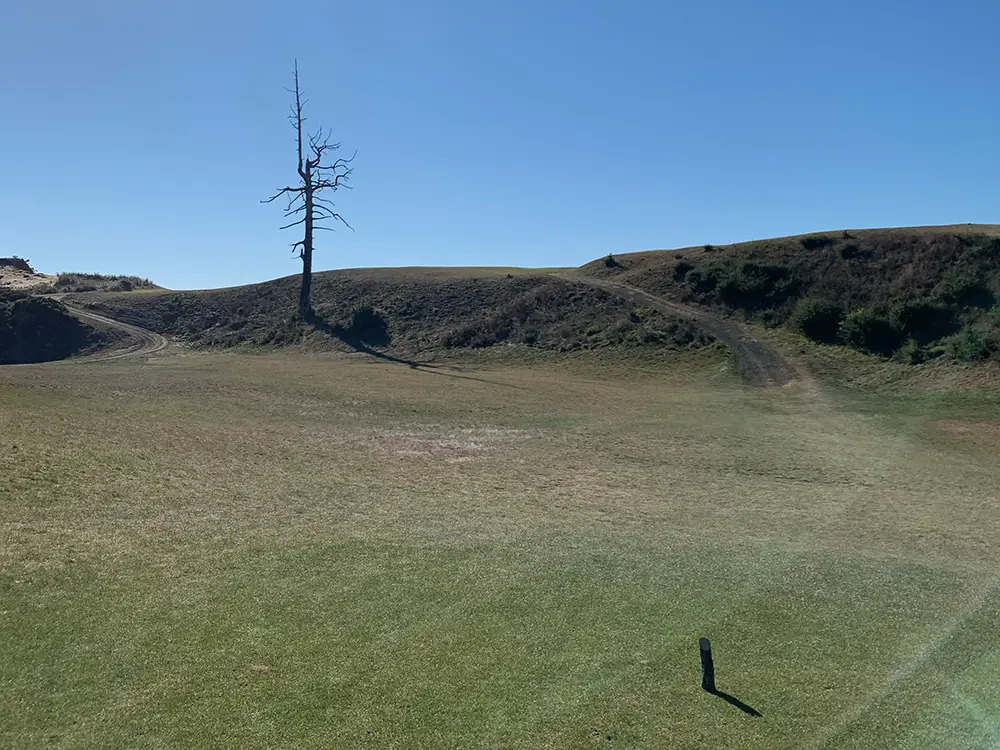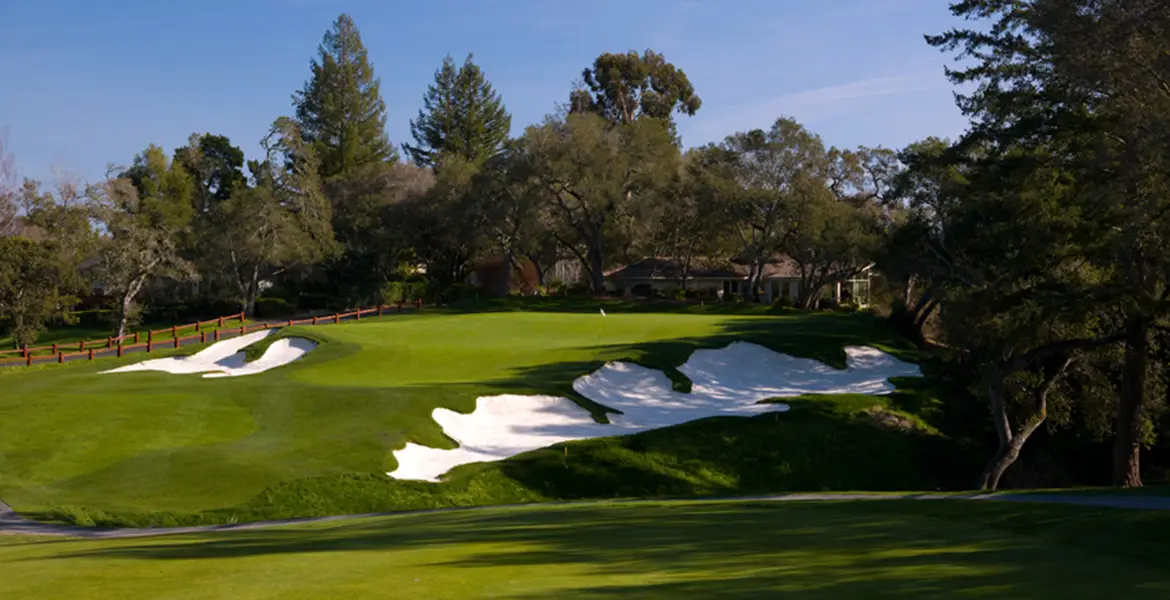The Dell hole at Lahinch Golf Club in Ireland remains almost as exactly as Old Tom Morris created it well over a century ago, a stunning and unique blind par three that plays over a 30-foot-tall hill to a narrow green set between the grassy dunes. For golfers on the tee, the only indication of where the flag is located is a white stone atop the hill that is moved daily by greenkeepers to mark the day’s pin position.
It’s one of several memorable blind shots at Lahinch, a feature not uncommon throughout the great links courses in the UK and Ireland.
In the U.S., blind shots aren’t as common—in large part because modern equipment made it easier for architects to move land and not have to play over an existing landform. With busy public courses, there can also be safety and pace of play considerations.
But there are still plenty of courses that have completely blind or partially blind shots across the U.S., whether it’s a tee shot or an approach into or up to an unseen (or almost unseen) target. For some, there’s a joyous anticipation when it comes to blind shots and where their ball might finish. For others, blind shots are the most hated in the game, potentially leading to results perceived as unfair, especially if what they believed to be a well-struck and well-targeted effort leads to a lost ball. (I’ve found myself in both camps at times.)
Here’s a list of some of my favorite blind holes in the U.S. that the public can play.
3rd Hole—Old Macdonald at Bandon Dunes Golf Resort (Bandon, Ore.)
The “Sahara” hole at Old Mac is a short par four that plays up and over not only a huge dune ridge, but the C.B. Macdonald tribute course’s iconic Ghost Tree. From the main resort tees, the safe line to the right demands a carry of about 150 yards. But flirting with the tree along the left side can allow players to get closer to the green and avoid a steep falloff on the right side of the fairway.

8th Hole—Pebble Beach Golf Links (Pebble Beach, Calif.)
A well-placed tee shot on the 8th hole at Pebble Beach sets up one of the most dramatic approaches—almost full carry over rocky coastline—in golf. The trick is getting the right distance on a blind tee shot that for the majority requires a layup to stay short of the cliff. You can be sure there are plenty of resort golfers who dislike not having a clear view of the hazard line off the tee, but there’s no question it’s a shot loaded with anticipation.

6th Hole—Plantation Course at Kapalua (Maui, Hawaii)
With a course draped across the side of a mountain on an old pineapple plantation, there are bound to be a few blind shots. The 4th and 6th holes both have blind tee shots, but it’s the short par-four 6th that gives players an opportunity to catch a speed slot and get close to the green if they navigate what looks to be a narrow window off the tee. A large fairway bunker pinches in on the left side, while a deep gorge looms to the right, with the multi-tiered green set far below in a hollow.
16th Hole—Pasatiempo Golf Club (Santa Cruz, Calif.)
A blind tee shot on the par-four 16th hole at Alister MacKenzie’s Pasatiempo provides a buildup to the course’s greatest reveal: the approach shot into a dramatic, three-stepped green. The tee shot plays to the top of a hill, where the 16th green is dramatically revealed. MacKenzie has called this the greatest “two-shot” hole he ever built, and the blind opener is a key part of the scene-setting.

13th Hole—Tobacco Road Golf Club (Sanford, N.C.)
Golfers are greeted by a lot of quirks at the Mike Strantz-designed Tobacco Road, blind shots among them. The 13th hole is a double-dogleg par five that features a completely blind, uphill shot to a small green tucked into sand dunes. The hole epitomizes the challenge at Tobacco Road, which is well-known for its elevation changes, unsettling visuals, and wild green complexes.

3rd Hole—Yale Golf Course (New Haven, Conn.)
There are several blind shots to pick from at Yale, which is undergoing a significant restoration led by Gil Hanse as it approaches its 100th anniversary. But it’s hard not to start with the par-four 3rd hole, which is called “Blind.” The green is tucked behind a hill, so the approach shot is blind. And a well-placed drive to an undulating fairway, with a pond to the right, is required to set up an optimal approach to the sloping green.

What blind shots in the U.S. would you add to this list? Tell us about them in the comment section.







17th at Cabot Cliffs and 15th Cabot St. Lucia, both great.